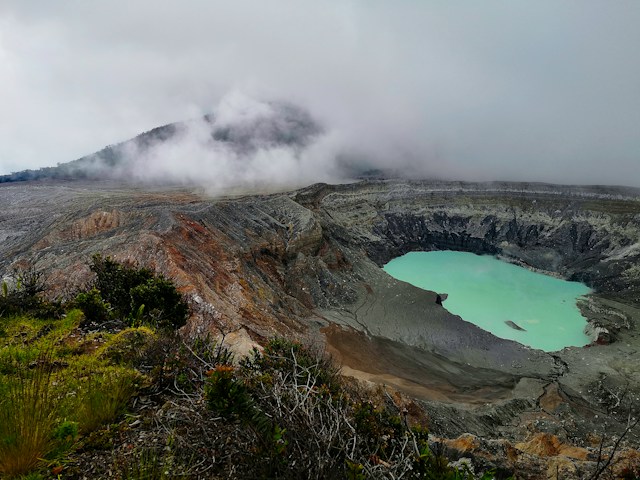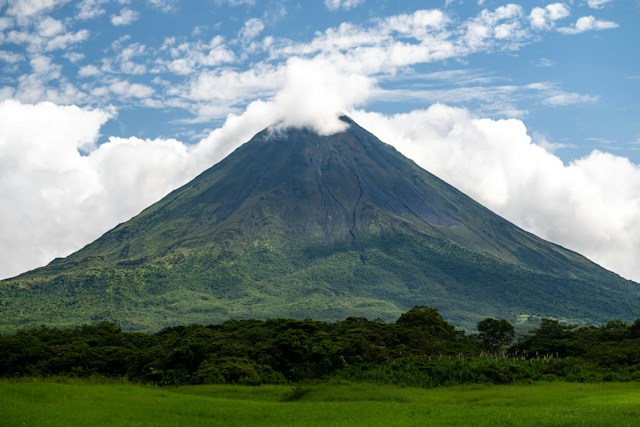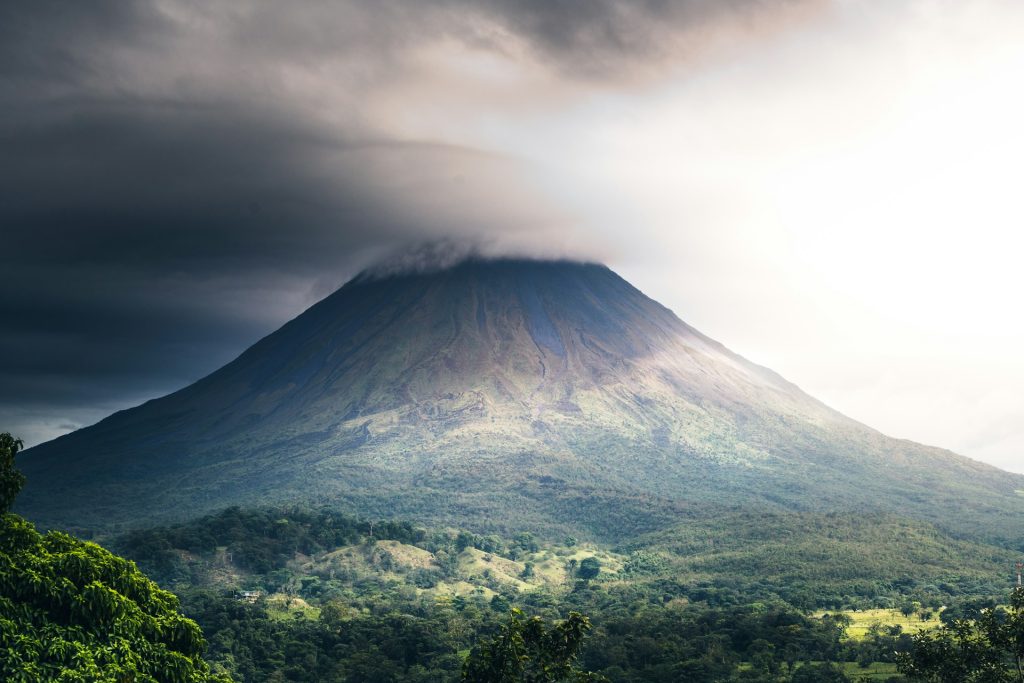Costa Rica, often referred to as the “Land of Volcanoes,” is a paradise for nature enthusiasts and adventure seekers alike. Nestled in Central America, this small but diverse country boasts a staggering number of volcanoes. These majestic giants not only shape the landscape but also provide unique opportunities for travelers to witness the raw power of nature up close. In this article, we will take you on a journey through the world of volcano travel in Costa Rica, exploring its volcanic wonders, the thrill of adventure, and the captivating beauty that awaits those who dare to venture into the heart of these fiery mountains.
A Land of Volcanoes
Costa Rica is home to over 200 volcanic formations, with several active and dormant volcanoes dotting its picturesque landscape. These volcanoes are divided into three main ranges: the Guanacaste Range, the Central Range, and the Talamanca Range. Each range offers a distinct experience for travelers, from adrenaline-pumping adventures to serene moments of awe-inspiring beauty.
The Big Players: Arenal and Poás Volcanoes
Among the many volcanoes in Costa Rica, two stand out as the most popular destinations for volcano enthusiasts: Arenal and Poás.
Arenal Volcano: Located in the northern part of the country, Arenal Volcano is one of the most iconic and active volcanoes in Costa Rica. Its perfectly conical shape and frequent eruptions have earned it the nickname “The Lighthouse of Costa Rica.” Visitors can take guided hikes to the base of the volcano, where they can witness steam vents, lava rocks, and the incredible biodiversity that thrives in the surrounding Arenal Volcano National Park.
Poás Volcano: Just a short drive from the capital city of San José, Poás Volcano is known for its breathtakingly large crater. The main crater is over 1,300 feet deep and is constantly emitting sulfuric gas, creating a mesmerizing spectacle. Visitors can walk along well-maintained trails leading to viewpoints overlooking the crater. The nearby Poás Volcano National Park is also home to lush cloud forests and serene crater lakes.
Adventure Awaits: Volcano Hiking and Exploration
Costa Rica’s volcanoes offer a wide range of outdoor activities for adventure enthusiasts:
Hiking: Volcano hiking is a thrilling experience that allows you to get up close and personal with these geological wonders. Guided tours take you on treks through dense forests and lava fields, offering breathtaking views of the surrounding landscape.
Hot Springs: Many volcanic regions in Costa Rica boast natural hot springs. These thermal pools are heated by the volcanic activity beneath the Earth’s surface, providing a perfect opportunity for relaxation amidst nature’s beauty.
Ziplining: Some volcanoes, like Arenal, offer ziplining adventures that allow you to soar above the treetops and witness panoramic views of the volcano and its surroundings.
Wildlife Observation: Costa Rica’s volcanic areas are teeming with wildlife. Sloths, monkeys, toucans, and countless other species call these regions home. Birdwatching and wildlife photography are popular activities for nature enthusiasts.

Responsible Tourism and Conservation
While volcano travel in Costa Rica is undeniably exciting, it is essential to be mindful of the fragile ecosystems that surround these natural wonders. Responsible tourism is crucial to preserving the environment and biodiversity. Visitors should always follow park regulations, stay on designated trails, and avoid disturbing wildlife.
Furthermore, Costa Rica has made significant strides in sustainable tourism and environmental conservation. Many lodges and tour operators in volcanic regions have adopted eco-friendly practices and contribute to the protection of these pristine areas.
The Cultural Aspect: Learning from Locals
Costa Rica’s rich culture is deeply intertwined with its volcanoes. Indigenous communities have lived in volcanic regions for centuries and have developed unique traditions and knowledge about these natural wonders. Travelers have the opportunity to learn from local guides and communities, gaining insights into the history and folklore associated with volcanoes.
Volcano travel in Costa Rica offers a once-in-a-lifetime opportunity to explore the raw power and beauty of nature. Whether you’re seeking adventure, relaxation, or a deeper connection with the natural world, Costa Rica’s volcanoes have something to offer every traveler. Remember to travel responsibly, respect the environment, and embrace the rich cultural heritage of this remarkable country as you embark on your volcanic journey in the “Land of Volcanoes.”
Beyond Arenal and Poás: Exploring Lesser-Known Volcanoes
While Arenal and Poás are the most famous volcanoes in Costa Rica, the country has numerous lesser-known volcanoes that are equally worth exploring. These hidden gems provide a more intimate and less crowded experience for travelers seeking solitude and a deeper connection with nature.
Rincón de la Vieja Volcano: Located in the northwestern province of Guanacaste, Rincón de la Vieja is a volcanic complex with a variety of geothermal features, including fumaroles, hot springs, and bubbling mud pots. Hiking trails lead through lush forests to waterfalls, where you can cool off after a day of exploring.
Irazú Volcano: Situated in the Central Valley, Irazú is the highest volcano in Costa Rica and offers breathtaking views of both the Pacific and Atlantic Oceans on a clear day. Its main crater contains a striking green-tinted lake known as Diego de la Haya, adding to the surreal landscape.
Turrialba Volcano: Although Turrialba has gained notoriety for its recent eruptions, it remains a fascinating destination for volcanic enthusiasts. Visitors can explore its surroundings and enjoy views of the active crater from a safe distance.
Tenorio Volcano: In the northern part of Costa Rica lies Tenorio Volcano National Park, home to the stunning Rio Celeste. This river is famous for its vivid blue color, which is a result of the mineral-rich waters coming from the volcano. Hiking through the lush rainforest to witness this natural wonder is a must-do experience.

Practical Tips for Volcano Travel
Weather: Costa Rica’s volcanic regions can experience unpredictable weather, so it’s essential to be prepared. Bring layers, rain gear, and sturdy hiking boots.
Guided Tours: While it’s possible to explore some areas independently, joining guided tours can enhance your experience. Knowledgeable guides can provide insights into the geological and ecological aspects of the volcanoes.
Timing: The best time to visit Costa Rica’s volcanoes is during the dry season, from December to April. This period offers clear skies and optimal hiking conditions.
Safety: Always prioritize safety when exploring volcanic areas. Pay attention to park rangers’ advice and respect trail closures, especially in active volcanic zones.
The Future of Volcano Travel in Costa Rica
As Costa Rica continues to gain popularity as a tourist destination, responsible tourism and conservation efforts become increasingly critical. Sustainable practices and the protection of these fragile ecosystems are essential to ensure that future generations can enjoy the beauty and wonder of Costa Rica’s volcanoes.
Local communities, tour operators, and the government are working together to strike a balance between tourism and conservation. Initiatives such as reforestation, waste management, and community-based tourism are contributing to the preservation of these natural treasures.
In conclusion, volcano travel in Costa Rica is a captivating and unforgettable experience. From the well-known giants like Arenal and Poás to the hidden wonders of Rincón de la Vieja and Tenorio, Costa Rica offers a diverse range of volcanic adventures. As you embark on your journey, remember to tread lightly, embrace the local culture, and leave no trace, ensuring that these volcanic landscapes remain pristine for generations to come.







